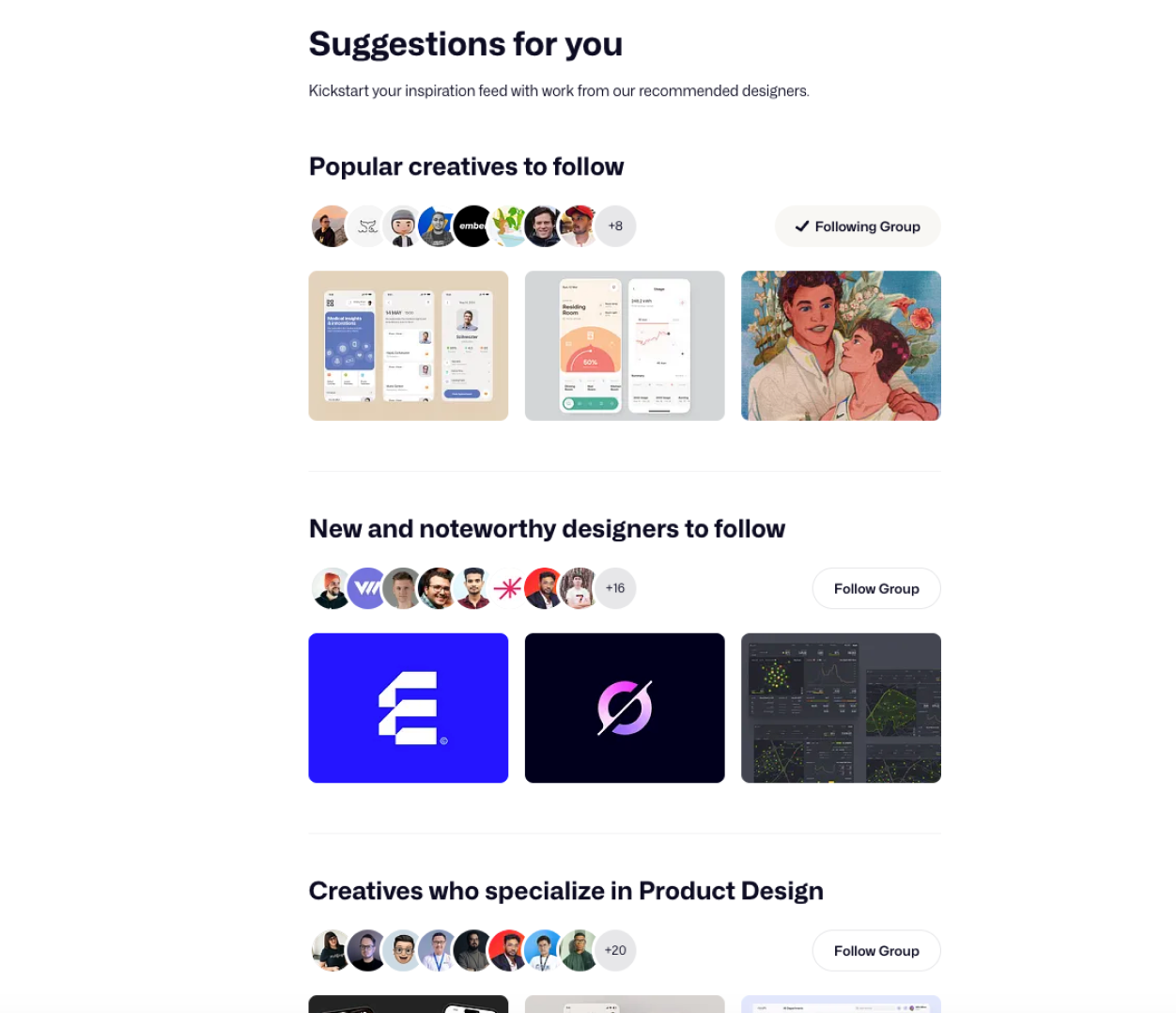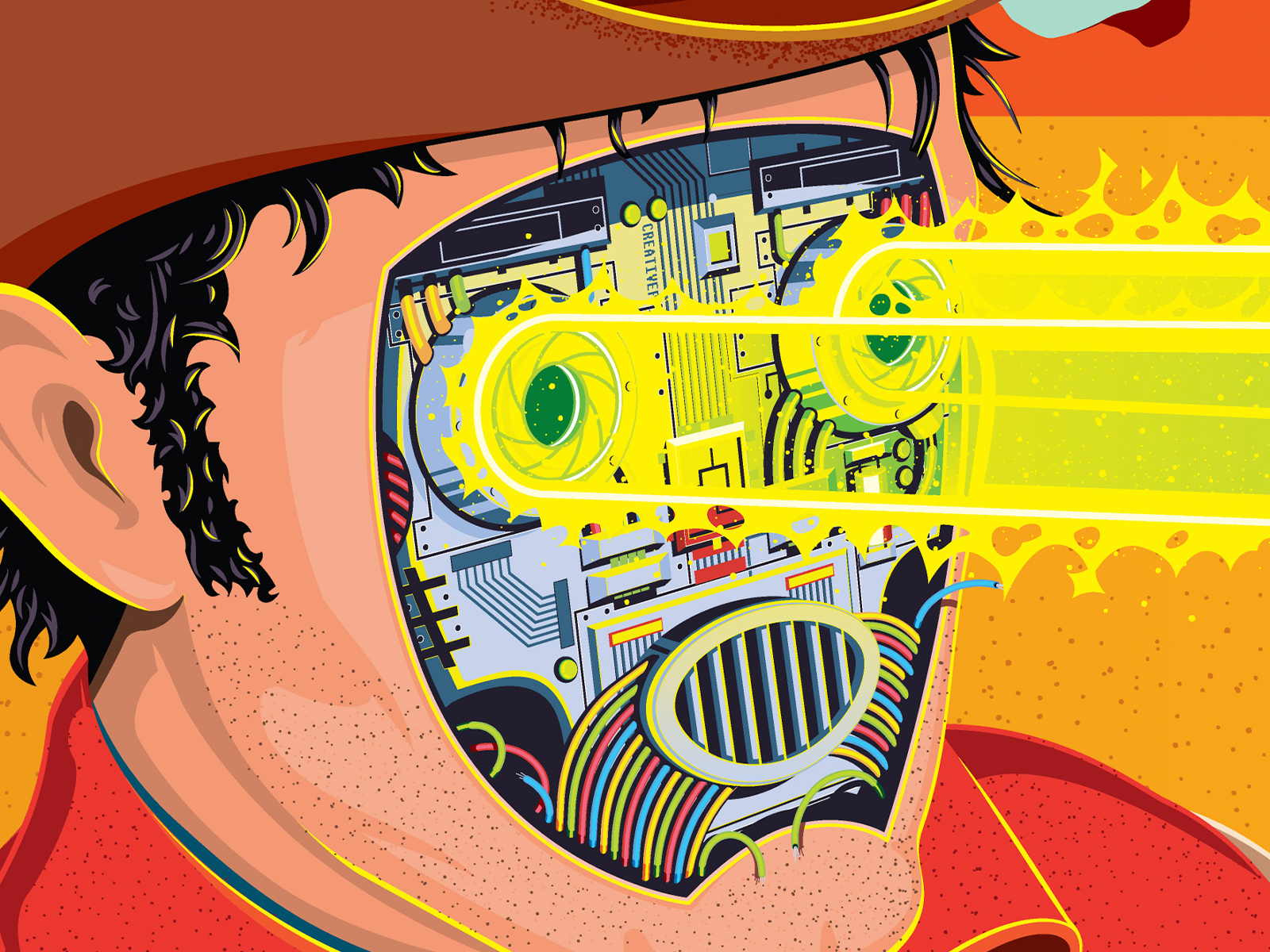This is the latest in a series of posts explaining the decisions we make that affect our users, as well as the results of those decisions (positive or negative).
Dribbble exists to help designers generate and convert leads, and we won’t succeed unless they do. Designers will share their work, advertise their services, and transact on the platform only if they expect to land more clients as a result.
With that in mind, we’re focused on increasing the number of designers who receive leads and the number of leads each designer receives, with work underway to improve every facet of the conversion funnel.
Releases this month (so far) include:
- A new homepage that makes it easier for clients to search for designers and design services.
- A new signup flow that minimizes friction for clients creating an account (required in order to send a Project Request or purchase a Service).
- “Write with AI,” which helps clients quickly and easily compose effective requests to designers.
This work has had an immediate impact on lead flow – in the past two weeks, more prospective clients sent requests to designers than any other two weeks since we began facilitating transactions last September. Among them were requests from Amazon, Salesforce, and Unilever, with budgets into six figures.
It was also our best two-week stretch for Proposals, Orders, GMV, and nearly every other key metric we follow.
More detail below on the thinking behind each feature and early results we can attribute to them.
Homepage
We want visitors to our website to hire designers. The first step is for visitors to search for designers available for work, ready-to-purchase design services, or examples of designers’ previous work.
We redesigned the homepage – our most-visited page – to bring more attention to Designer Search and Service Search, without diminishing Shot Search (which remains an important source of leads for designers):

We just released the new homepage last Wednesday, but the early impact on Designer Search and Service Search activity has been very promising:




On the other hand, Shot Search activity has remained flat pre/post-release.
Signup Flow
Once a client finds a designer to work with, they’re required to create an account (or log into their existing account) before they can send that designer a request. Consequently, the more friction signup/login creates for the client, the less likely the designer is to receive that request.
Two weeks ago, we introduced a faster, easier, and more secure way for users to create an account:
- Passwordless authentication – users now receive a one-time passcode by email which eliminates password-based vulnerabilities and the need to remember login credentials. Alternatively, users can sign in with Google.
- Fewer steps – usernames are now auto-generated and we cropped the onboarding flow to just two required inputs – email address and the one-time passcode that verifies the email address (though we invite users to share more).
- Improved stability and maintainability – we cleaned up the underlying code to make the feature faster, more reliable, and easier to improve going forward.

Previously, account creation was a much more involved process because we used that opportunity to personalize the new user’s experience. Specifically, we wanted to help inspiration-seekers jumpstart their Following feed by recommending groups of designers that were popular on Dribbble:

While this type of onboarding made sense for us in the past, it just doesn’t make sense for us today:
- The Following feed is no longer how most users discover content. In Dribbble’s early days – when designers followed others whose work or process they admired – the Following feed was central to the user experience. However, over the years, search has become increasingly important. For instance, over the trailing 12 months, only 9% of users who interacted with designers’ work did so from their Following feed, while 74% did so from a search results page. This is why we recommend designers focus on optimizing their uploads for search (for more information, see this Help Center article).
- While recommending popular accounts to new users may seem like a win for the designers gaining followers, those accounts were often followed by hundreds – or even thousands – of users who had just signed up. We frequently received questions and complaints from designers who received waves of new followers but without a proportional uptick in engagement with their work. To make matters worse, because these new followers typically had no work or followers of their own, they appeared to be bots – undermining trust in our platform.
- Once a client finds a designer who may be a good fit for their project, they want to make contact as soon as possible. Any friction they encounter increases the likelihood that they go elsewhere to transact. The previous signup flow required clients to complete nine separate steps – including entering a username and password, and uploading an avatar – which almost certainly cost designers leads. We deliberately made this stage of the conversion funnel virtually effortless for clients, so that designers don’t miss a single lead.
Since introducing the new signup UX/UI in Week 24, the number of users completing the account creation process has soared:

In the past two weeks, new user growth has accelerated from 17.7% Y/Y from Weeks 1 through 23 to 114.6% Y/Y since (without a proportional increase in website traffic). In fact, the past two weeks have produced more new users than any two weeks in Dribbble’s ~16 year history.
Of course, there are tradeoffs. For example, one (very) predictable result of no longer having new users automatically follow popular or trending accounts is that, over the past two weeks, the average number of new followers gained by designers each week has declined by ~60%.

A decline in this metric would be a cause for concern for a social network, but the Following feed isn’t a source of leads for designers – and personalizing it during signup comes at the expense of conversion – so it’s a tradeoff we can easily justify.
Write with AI
Once a client has found a designer they want to work with and has signed up or logged in, they can send their request. We developed “Write with AI” to help clients at this stage of the conversion funnel.
“Write with AI” increases lead generation and conversion:
- A blank Project Request can be daunting for some clients (especially clients sending their first-ever request), but they can now generate a thoughtful message in seconds.
- The more descriptive and well-organized a Project Request is, the more context the designer has, and the more likely they are to reply quickly.
- AI-generated Project Requests automatically comply with our Terms of Service, which reduces moderation time and gets leads into designers’ hands faster.
To use the feature, a client can input something themselves into the Project Request and then take the “Improve what I wrote” path:

Alternatively, they can take the “Help me start” path which will generate a robust Project Request based on the client’s responses to a few brief questions:

In the ~1.5 weeks since we introduced “Write with AI,” 19% of clients have used the feature to send at least one Project Request:

Clients sending their first-ever request were twice as likely as repeat senders to use the feature:

Of the adopters, ~60% preferred the “Help me start” path:

Clients sending their first-ever request were considerably more likely than repeat senders to prefer “Help me start”:

While the early data suggests that “Write with AI” has, in fact, made it easier clients to send requests, we haven’t yet seen a difference in designers’ response rate/time to these requests (which would indicate that AI-generated requests are more effective at eliciting a reply). That said, this is just the first iteration of the feature, and we expect AI-generated requests to eventually outperform others.








